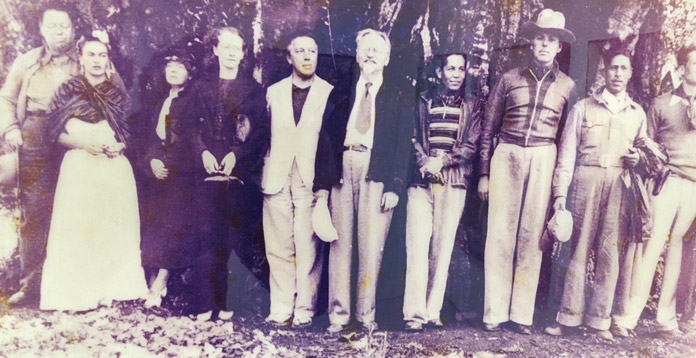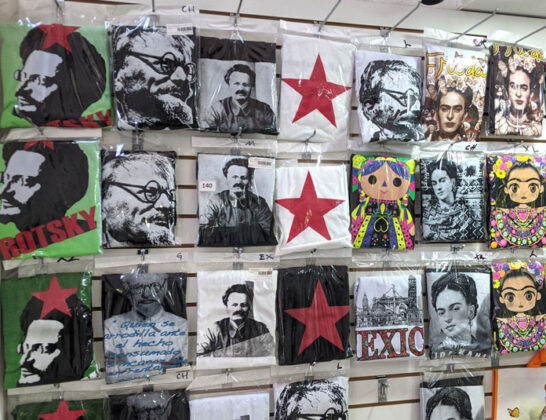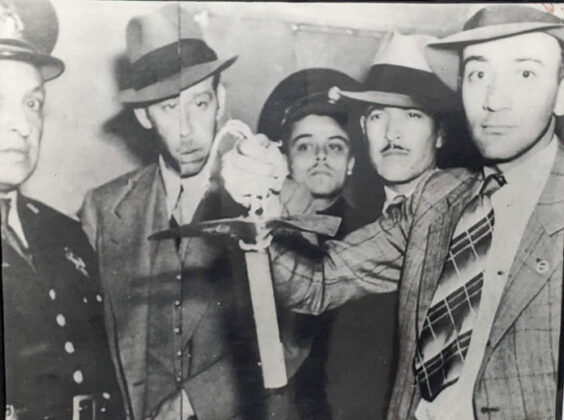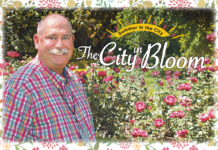 Send in your ALIVE! AROUND THE WORLD
Send in your ALIVE! AROUND THE WORLD
Take Alive! with you wherever you go! Bring your recent copy of Alive! with you when you travel and snap a high resolution photo of you holding Alive!
Send in your pictures and descriptive text using the online form, and we’ll publish it.
SUBMIT YOUR ALIVE! AROUND THE WORLD
![]()
Chile
“The horn-shaped peaks are the Cuernos del Paine, one of the two most iconic sites in Torres del Paine National Park, in southern Chile’s Patagonia region. The park is known for its soaring mountains, bright blue icebergs from glaciers, and grasslands that shelter rare wildlife such as llama-like guanacos.
— Norman Faner, Retired, LADWP, and Florian Faner, Retired, General Services.

Mexican Painters and Revolutionaries
Letter From Mexico City
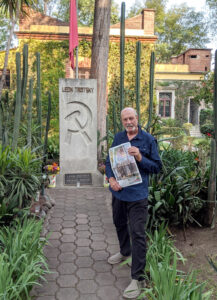
If we look back in history, we can see that art and politics share a long-time connection as art gives those who want political or social change a stage to express their views. Today, travelers to Mexico City can see many examples of this through the wondrous, historical works of art that were created in the period after the Mexican Revolution.
Sightseeing in the buzzing center of Mexico City is best done by taxi/Uber to avoid traffic problems and the endless search for suitable parking – and more so when visiting one of the city’s most popular tourist sites, the Casa Azul in the pretty neighborhood of Coyoacán. Here you will find the home of Mexican artist and Marxist revolutionary, Frida Kahlo. She lived here for many years with her artist husband, Diego Rivera. In 1957, after her death, he donated the house and its contents as a museum to her memory.
Also tucked away in the same neighborhood is the lesser-known home and museum that tell quite a tale – that of the Russian Marxist revolutionary and early supporter of Joseph Stalin Lev Davidovich Bronstein, better known as Leon Trotsky. Born to a wealthy Jewish family in Yanovka (now Bereslavka), Ukraine, he had the independent financial freedom to embrace Marxism and developed his own ideology called “Trotskyism.” Unhappy with his given name, he changed it to Trotsky, after the surname of a sympathetic jailer in the Odessa prison where he had been incarcerated. His home in Mexico City is now also a museum, full of historical memorabilia depicting his turbulent life. He was twice exiled to Siberia for revolutionary activities including escaping to London, where he befriended Vladimir Lenin, who he helped to organize the failed Russian Revolution of 1905. Exiled again, he spent the following ten years working in Britain, Austria, Switzerland, France, Spain and the United States.
After the second revolution in 1917, which brought an end to tsar Nikolai II Alexandrovich Romanov’s capitalist monarchy, Trotsky became the head Commissar of the Red Army. With the death of Lenin and the rise of Joseph Stalin, he was kept under surveillance, his phone was tapped and there were mysterious attempts to kill him. In 1929 he was expelled from the Soviet Union and spent the rest of his life openly critiquing Stalin’s brutal and savage version of socialism. Because of this, he was formally condemned to death in 1936 by Stalin.
During this same timeframe, the previously mentioned Mexican muralist painter Diego Rivera and his wife Frida Kahlo were voicing their support of Marxism, believing that political power should rest in the hands of the working class. Upon hearing about their hero’s plight, they petitioned the Mexican government to grant asylum to Leon Trotsky and his wife, Natalia Sedova. They gave them a home next to their own at the Casa Azul, and to protect their political hero’s safety, they installed covered windows, alarm systems and guards.
Diego Rivera was renowned for his infidelities, and Kahlo also had many romantic partners over the course of her short life. At 29, dressed in her usual traditional and colorful Tehuana clothes with an elaborately patterned skirt and blouse, she was a temptation difficult to resist for the 57-year-old Trotsky after two years of living next door to her. The lovers carried out their blatant flirtations by speaking in English right under the nose of Trotsky’s wife (she spoke only Russian). However, she soon realized all was not right and things came to a screeching halt when his wife, Natalia, gave him the “me-or-her” ultimatum.
Subsequently, Trotsky soon moved to a secure house a few streets away, which was in fact just a fancy prison, protected day and night by Mexican federal officers. It was also self-sufficient with its own vegetable garden, chickens and rabbits held in pens. Kahlo and Trotsky remained friends until his assassination a few years later.
In 1940, Mexican painter David Alfaro Siqueiros unsuccessfully attempted to assassinate Trotsky in his home. However, several months later, Trotsky was not so lucky when Stalin’s undercover agent, a Spanish communist named Ramón Mercader (a boyfriend of Kahlo’s sister, Cristina) killed Trotsky with an ice pick to the back of his head.
Today, the courtyard between the museum and the house has a splendid statue of Leon Trotsky. Here you can ponder on historical events and lives while sitting in a shady resting place, which is the museum’s excellent coffee shop. On leaving the museum you will pass through many charming streets on the way back to the restaurants around the Centennial Garden and Fountain of the Coyotes.
For a final stop if you have time, try to squeeze in a visit to the Coyoacán artists market in the same area and pick up inexpensive handicrafts and souvenirs. The entrance to the large covered market can be found across from Plaza Hidalgo. From here it is very easy and inexpensive to travel back to the Mexico City center by taxi/Uber.
Until the next time: Remember the world is full of adventures just waiting for you to enjoy!
– The Captain




